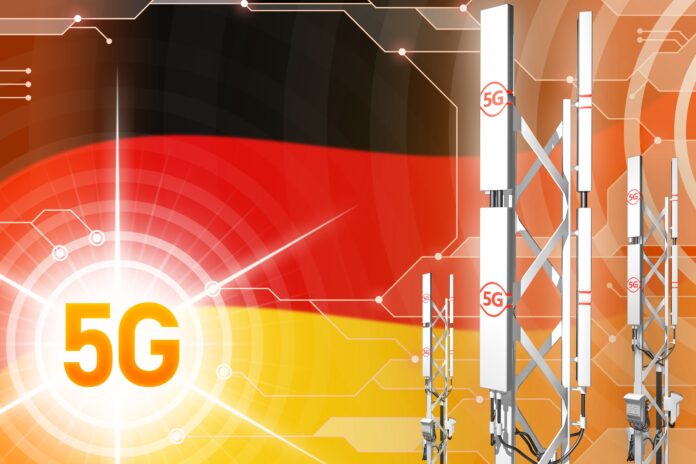The regulator’s latest annual report suggests only 10% of mobile data traffic is 5G in the country
According to the latest annual market survey by regulator Bundesnetzagentur (BNetzA), the average data volume used in mobile networks per active SIM profile and month increased from 7.2 GB in 2023 to 7.4 GB in 2024 – one of the lowest in Europe. Perhaps unsurprisingly, the majority (88%) of data traffic via mobile networks was carried out via LTE, while only ten percent of data traffic was carried out via 5G and two percent of data traffic was carried out via the GSM network (2G).
The data volume transmitted via mobile networks in Germany amounted to 9.6 million GB in 2024, compared to 9.12 million GB in 2023. The relatively modest increase compared to previous years is partly due to a reassignment made in 2022 that reclassified data traffic from fixed wireless broadband services to the fixed network category. However, companies only fully reported this data in 2024.
Analysts Tefficient rate Germany’s efforts as the second lowest share of its mobile traffic on 5G in Europe, pipping only Romania – although in the latter case, there is some dispute around Romanian numbers and definitions.
Infrastructure being installed
The expansion of mobile networks is primarily driven by radio base stations. According to network operators, the number of these interfaces between wireless and wired networks increased by just under 4% year-on-year to 222,474 by the end of 2024, driven by the continued rollout of 5G networks.
The number of LTE base stations in operation rose by nearly 1 percent to 88,373. The number of 5G base stations grew by 14%, from 49,571 at the end of 2023 to 56,558 at the end of 2024. Further network densification in city centres is being achieved through small cells at 3,233 locations, which provide additional capacity in areas with high user concentration.
Germany’s current 5G network rollout still partly relies on the existing 4G infrastructure – and known as 5G Non-Standalone (5G NSA). The currently deployed 5G networks using Dynamic Spectrum Sharing (DSS) are also classified as 5G Non-Standalone. DSS enables simultaneous use of 4G and 5G in the same frequency band. Base stations equipped with DSS are typically counted both as 4G and 5G base stations. Around 92 percent of 5G-capable base stations are implemented using DSS.
From an infrastructure point of view, the 5G SA network is getting there, but take-up is patchy. The number of antenna sites (88,906 at the end of 2024) is lower than the number of radio base stations (222,474 at the end of 2024) – mainly because a single physical antenna site usually hosts base stations for different mobile standards.
The antenna sites are predominantly connected via fibre or microwave links. At the end of 2024, approximately 56% of sites were connected via fibre, and about 45% via microwave. Some sites are connected via both fibre and microwave, which results in a combined share exceeding 100 percent. The number of sites connected via fibre increased by around 6% compared to the previous year. A small proportion of antenna sites are still connected using copper-based transmission paths.
5G NSA traffic grows
According to the report, as of end-2024, 109.2 million SIM profiles were actively used in Germany (excluding M2M), equating to about 1.3 per inhabitant. The majority (79%) were managed by network operators, with a small shift away from MVNOs due to 1&1 Mobilfunk entering the market as a new operator. Postpaid usage rose to 73%, continuing the gradual shift from prepaid. M2M SIM profiles grew 17% year-on-year to 73.7 million.
LTE was used by 89.7 million active SIM profiles, while 5G non-standalone saw a 90% increase to 37.4 million users. VoLTE adoption rose to 75 million. Among MVNOs, there were about 10.3 million active SIM profiles, with 96% using LTE and over 5.4 million on 5G NSA. VoLTE-compatible users in this group reached 8.1 million. Overall, 201.3 million SIM profiles were registered in Germany, including inactive and M2M profiles – up 16 million from the previous year.
Roaming
By the end of 2024, data traffic generated abroad totalled 429 million GB, exceeding the previous year’s figure of 347.4 million GB by around 23 percent. This rise is linked to the increasing use of online communication services and growing consumption of streaming content services.
The number of outgoing call minutes abroad fell by around 5 percent, from 3.42 billion minutes in 2023 to 3.25 billion in 2024. The number of SMS sent abroad dropped by almost 30 percent, from 212 million in 2023 to 150 million by the end of 2024.
Fibre growth
Away from mobile, BNetzA said the number of end customers supplied with fibre and homes passed increased to 21.8 million in 2024. This represents an increase of 3.9 million within one year. The number of active and inactive fiber optic connections in apartments and buildings (homes connected) rose from 7.3 million in 2023 to 8.6 million in 2024. At the same time, the penetration of active fibre connections rose to 5.3 million, exceeding the existing number at the end of 2023 by approximately one million fiber optic connections. Telekom’s share is around 28% of that.
Around 4.1 million active connections were FTTH connections (77%), that is, connections to apartments, and around 1.2 million were FTTB connections (23%), that is connections to the home. The share of active FTTH/FTTB connections (homes activated) in total active broadband connections in fixed networks increased from 11.2% in 2023 to 13.7% by the end of 2024.



